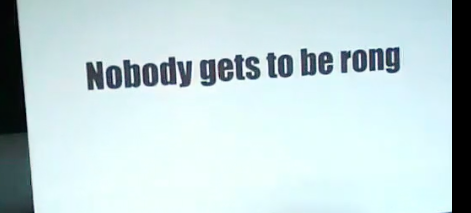Nobody Gets to Be Rong
07/02
The world could do with a few more convention busting insights. Particular to
western society most of us can relate to the image of ‘the boss’ arriving to take
names and kick some butt. The witch hunt is a tradition, fiercely propagated,
reinforced often and only but tolerated by almost all of us. What is that?! Is it not
identifying someone to blame so others don’t blame me? Yikes. A little blunt don’t
ya think? Let us be honest, aren’t most folks just a little bit relieved that someone
else got blamed? And… sounds and feels all too familiar.
What does it do for the future success of the person, the team, the organization
when we really just want to do well and the vibe that fills the air is ‘somebody is
wrong here’, and they are going to be punished, maybe hung by the thumbs on the
lunchroom wall. Oh goody, aren’t we just the happy productive bunch.
Unfortunately, also a parenting model used by some.
Shifting Perspectives: Embracing a Culture of Collective Contribution
What might it be like, what is the feeling you experience when I introduce the idea
that nobody gets to be wrong? And to help us play with the idea, let us spell wrong
without the w. Nobody gets to be rong. Yes, how does that feel? Most people react
to the misspelling before they react to the idea. The idea? What happens to
accountability? Who will clean this mess up? Some things are wrong, period!
A few ideas for you.
What if we respond to new ideas starting with ‘yes…’ ?
What if we followed that ‘yes’ with an ‘and…’ as entry to adding to the idea,
reinforcing it, building it?
What if we have been setting our initial reflex (society taught) to find what is
wrong with the idea and even felt as though we ‘made points’ by pointing out what
is wrong? (I have been that and I can name names of others who do that)
What if we pointed our intellect to find helpful, positive add on ideas,
complementary upgrades, ways to multiply what was proposed in good ways?
And so on…
Nobody gets to be rong is meant to get our attention off of the automatic tendency
to complain and find fault with things. What if we skip around that negativity and
point our resources toward, ‘what can work here?’ and all of the many alternates to
letting our thinking head down the toilet?
Practical Applications of “Nobody Gets to Be Rong”
I lead a drumming circle with adult participants. I do not teach drumming. I do not
provide instruction about what we will be doing together for the next half hour.
And… I place three signs around the center area of the circle that ‘Nobody Gets To
Be Rong’. People take up chairs and kind of look around, maybe tap on the drum in
front of them a bit, maybe not. They chat. Then, someone starts to play a gentle
tap, tap, tap. Others watch. Some join. In about a minute or so, the whole room is
drumming, together, with perfect harmony. Some stay with the 1, 2, 3, 4 and others
start to explore ‘shave and a haircut, two bits’ as their rhythm. I have many, many
vivid memories of witnessing one of the participants starting to ‘direct’ another,
usually starting with the word ‘no’ and another participant pointing to the signs.
Realization crosses the face of the one who wanted to fix things starting with ‘no’.
The drum circle comes to vibrant life, all by itself. It has never, ever failed.
Nobody gets to be rong is born in a cradle of doubt, suspicion even, and soon
enough, with a little bit of patience and faith arises the perfect collaborative result,
bigger, better than could have been imagined. Everyone contributing whatever they
wish. After all…
Nobody gets to be rong.
Joseph Seiler MCC 2011-2022
Explore this perspective and expand what you do. Let’s chat, book your free call with me here.


